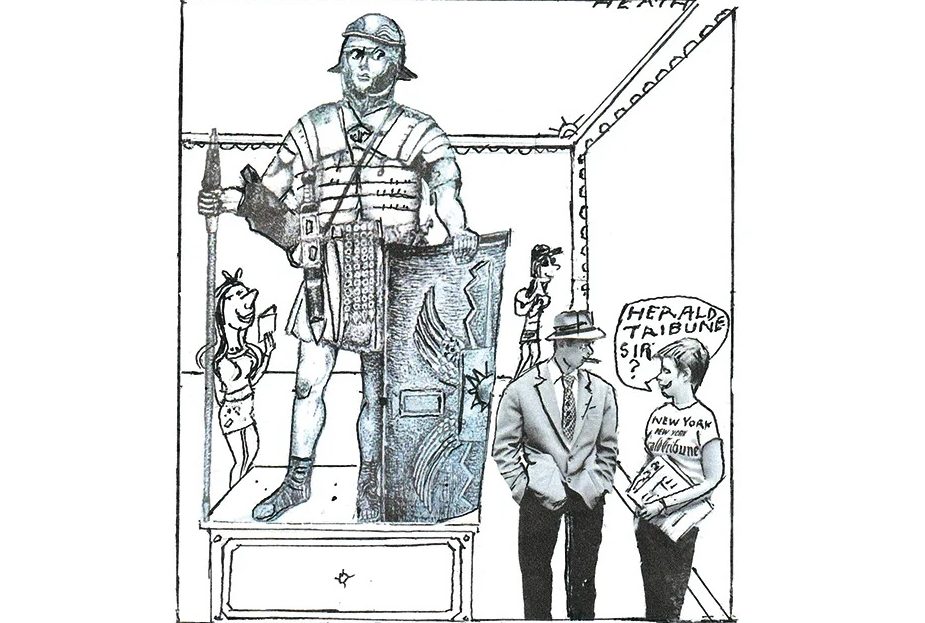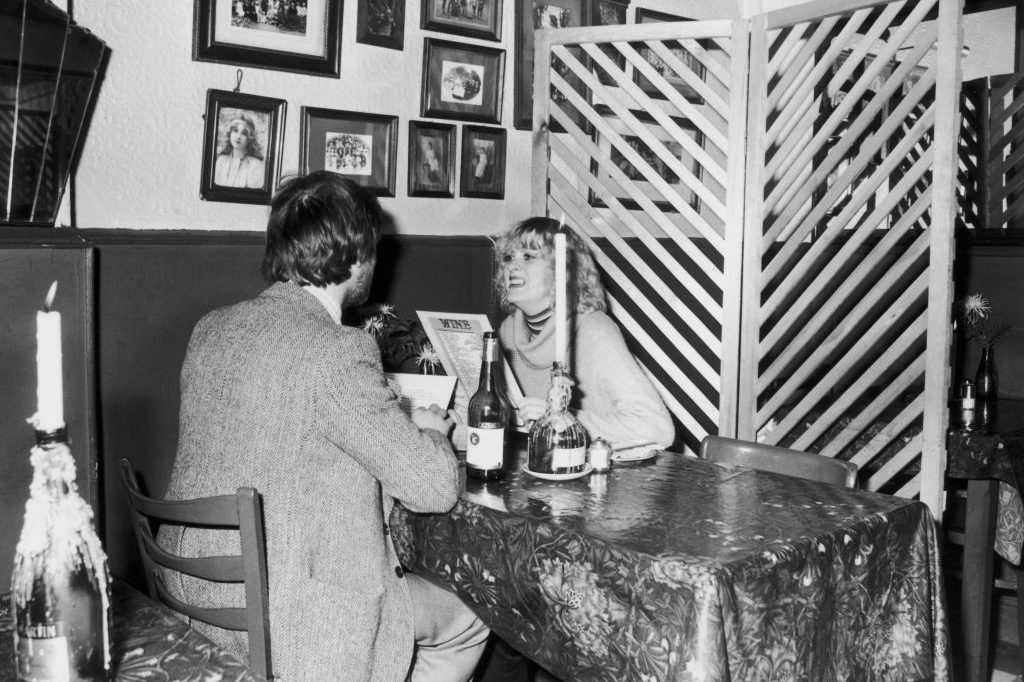Mirabile dictu, as we Latin lovers like to say. In other words, wonderful news! Attractive women have fallen for ancient Rome — and for classicists.
Well, that’s what the British Museum thought when it cooked up its advertising campaign for its new show, Legion: Life in the Roman Army, about Roman legionaries. The museum put up a controversial social media post, promoting the exhibition as an opportunity for single women to find single men.
I spotted a lissom blonde in green T-shirt and tie-dye trousers. We fell in step as we approached the gift shop
The post read: “Girlies, if you’re single and looking for a man, this is your sign to go to the British Museum’s new exhibition, Life in the Roman Army, and walk around looking confused. You’re welcome x.” It added: “Come for the Romans, stay for some romance.”
The museum said the post was a reference to the viral TikTok trend of women asking their boyfriends, husbands and fathers how often they thought about the Roman Empire. The video has now been deleted after women objected to its sexism.
But in the Socratic spirit of curiosity, I set off for the museum to see whether it was true: do male classicists exert an irresistible magnetism on female Latin lovers?
The setting of the show is suitably romantic. I plumped for the last slot of the day, when the tourists flee to the gift shop and only the passionate classicists remain. The exhibition is drowned in sepulchral gloom — perfect for illicit assignations in hidden corners. It’s nearly quiet, apart from the crunch-crunch audio track of legionaries marching — more like someone munching their way through an unending bowl of bran flakes, my friend Quentin Letts says.
All the same, as soon as I entered the show, bingo! There, standing alone, was a trim thirtysomething woman with a fashionable, cropped haircut, like Jean Seberg in À bout de souffle.
What’s more, she was staring, with locked gaze, into the eyes of a devilishly good-looking young man. The only trouble was, the young man was made of bronze and he was 2,000 years old. This Jean Seberg look-alike had excellent taste. She was transfixed by the bust of a young man with a griffin-topped Phrygian cap, from the late first century ad, found in Cumbria.
I took a breather on one of the show’s benches, perfectly built for two. Seconds later, a young blonde in a floral dress, with big black glasses — real specs appeal! — sat down right next to me. She got out her phone — perhaps to take my number? Perhaps not. She started looking up the history of one of the show’s tombstones — of Aurelius Nepos, a centurion of Legio XX, and his “devoted wife,” from the late second century ad.
It wasn’t just young women at the show. There were young men, too, including one in his twenties, with Byronic curtains of hair framing Greek-god features. He seemed to have a burning interest in pegging. He stared for several minutes at a vitrine of tent pegs, from the first century ad, found at Vindolanda camp in Northumberland.
Next stop, the show’s battle section. Surely the young women would flock to see hunky legionaries in fighting mode. There indeed stood a striking young American brunette, chatting to a group of adoring men with a note of joyful rhapsody in her voice. Which lucky man would she choose as the Paris to her Aphrodite?
Erm, none of them. As I got closer, she turned out to be an exhibition guide, praising the third century ad scutum of Dura-Europos — a rare Syrian wood and leather shield.
Finally, I spotted a lissom blonde in green T-shirt and tie-dye trousers. We fell in step as we approached the gift shop. When I held open the door for her, she said the one word I heard spoken to me in my entire afternoon at the museum. “Thank you,” she whispered in a soft, siren voice — and then raced off to look at a second century ad Egyptian mummy portrait of a young woman with pearls, emeralds and a carnelian. And that was that.
In my hour at the show, I didn’t see a single man approach a single woman — or vice versa. Yes, they were all in love… but with Rome. Who needs a soulmate when you’re immersed in a lifelong love affair with the greatest civilization of all time?
This article was originally published in The Spectator’s UK magazines. Subscribe to the World edition here.


























Leave a Reply